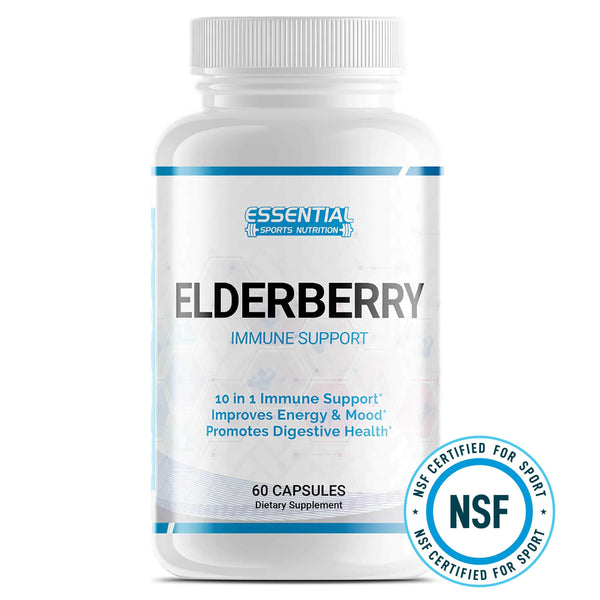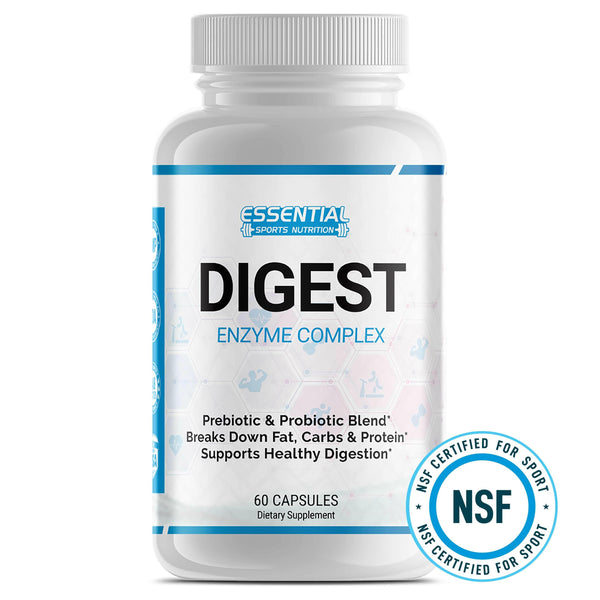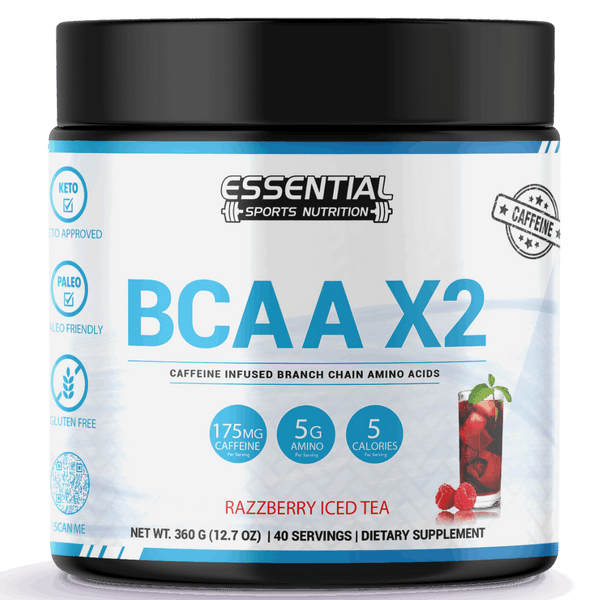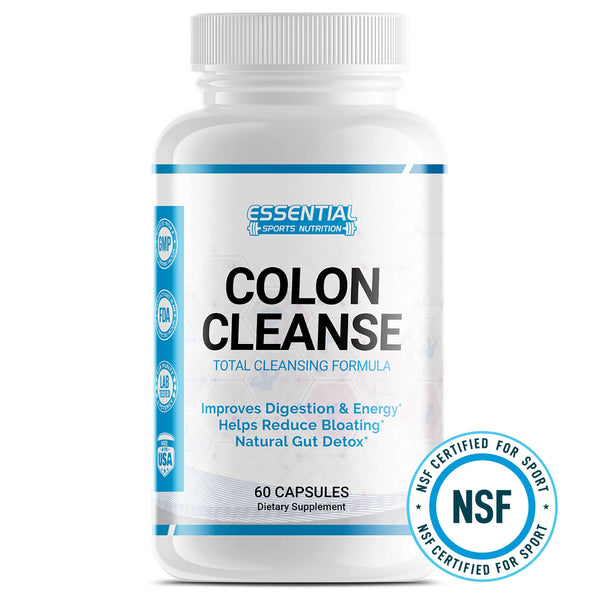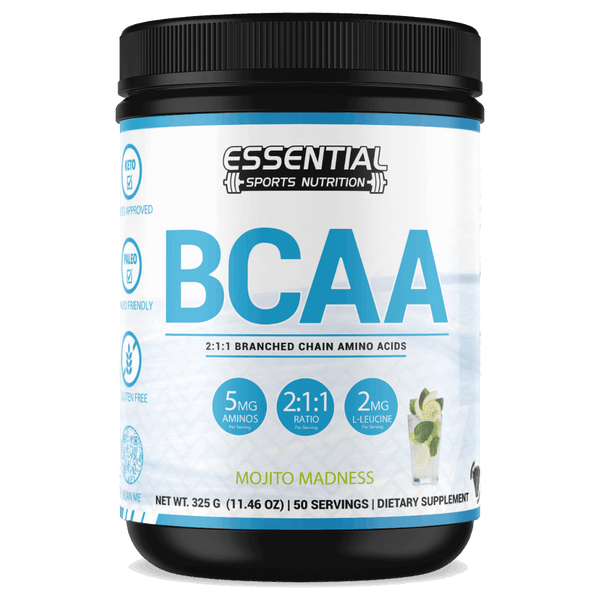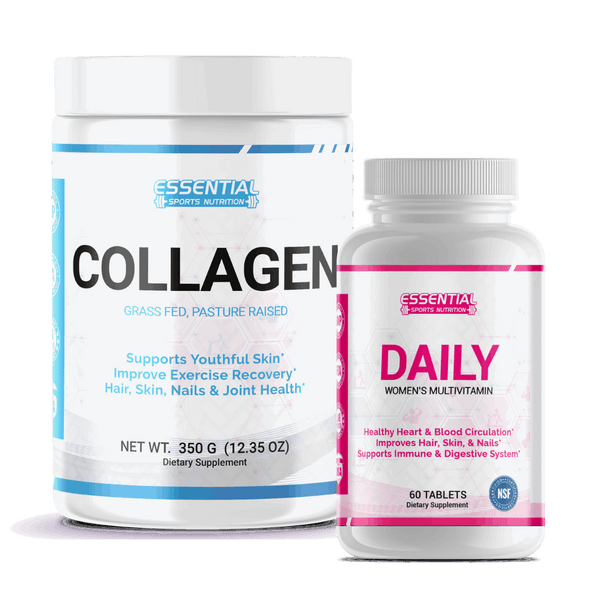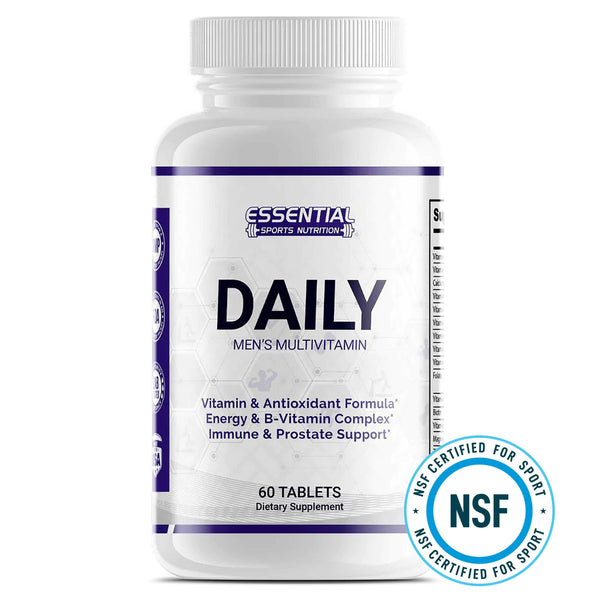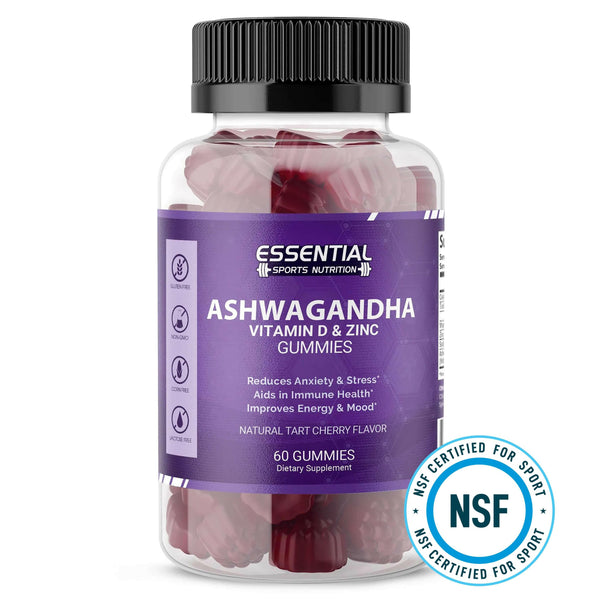Sports Massage Techniques for Athlete Recovery: Perform at Your Best
Whether you're an athlete looking to enhance performance or seeking the best ways for post-workout recovery, understanding different massage techniques could be a game-changer for your regimen. Discover the subtle art of muscle relaxation and the crucial role it plays in injury prevention and sports recovery. Not only do these techniques aid in maintaining your performance and recovery, but they also help keep your athletic performance at its peak. Join us as we delve into the dynamic world of massage for sports recovery—where your well-being is our top priority.

Key Takeaways
-
Enhanced Athletic Recovery: Sports massage aids in rapid recovery post-exercise.
-
Improved Performance: Techniques used in sports massage can significantly improve your physical capabilities.
-
Muscle Tension Relief: Regular sports massage helps in reducing muscle stiffness and enhances relaxation.
-
Injury Prevention: A consistent massage regimen can lower the risk of sports-related injuries.
-
Psychological Benefits: The relaxation afforded by massage therapy also contributes to mental preparedness for athletes.
The Fundamentals of Sports Massage for Athletic Recovery
For athletes at every level, sports massage is not merely a luxury, but a fundamental component in the quest for peak sports performance. Understanding the sports massage benefits begins with recognizing its role in enhancing range of motion and promoting muscle relaxation. If you're looking to optimize your recovery and improve your athletic output, investing time with a qualified sports massage therapist could offer a significant advantage. Let's delve into what makes this type of massage especially advantageous for athletic conditioning and rehabilitation.
A sports massage therapist is trained to apply a variety of techniques, some similar to a Swedish massage, but tailored to the needs of athletes. These experts can strategically target muscle groups that are specific to your sporting activities, aiming to improve flexibility and mitigate the risk of injury. Moreover, the therapist's knowledge extends to understanding the intricate blend of sports massage benefits for athletes, which includes both preparation and recovery from activities.
Now, let's consider a table that outlines the core benefits of sports massage for athletic recovery:
| Benefit | Description | Impact on Athlete |
|---|---|---|
| Improved Range of Motion | Loosens and stretches tight muscles, enhancing flexibility | Leads to more fluid movement and reduced risk of injury |
| Increased Blood Circulation | Boosts flow of blood to muscles, supplying nutrients and oxygen | Speeds up recovery time and promotes healing post-exercise |
| Muscle Relaxation | Alleviates muscle tension and soreness | Enables faster recovery and readiness for subsequent training |
| Psychological Readiness | Reduces stress and anxiety levels | Prepares the mind for optimal performance and focus |
Armed with this knowledge, you can approach your sports recovery plan with greater insight into how to harness the full sports massage benefits. Whether training for a marathon, recovering from an intense workout session, or looking for ways to enhance your overall well-being as an athlete, sports massage is a potent ally.
Remember, the efficacy of sports massage in fostering athletic recovery is sustained through regular sessions and tailored approaches by professional therapists. By incorporating sports massage into your routine, you are not only investing in your current performance but also in your long-term athletic career.
In conclusion, the fusion of technique, timing, and personalized care by a skilled sports massage therapist can translate into measurable improvements in your athletic endeavors. It is an indispensable bridge between the rigors of performance and the body's need for rejuvenation, thereby holding a revered place in the world of sports recovery.
Exploring the Psychological Edge: Athletic Massage for Mental Readiness

As an athlete, you know that your state of mind can be just as crucial as your physical condition when aiming for peak sports performance. Achieving a high level of psychological readiness is key, and that's where massage therapy steps in as an unexpected but powerful ally. Understanding the effects of massage goes beyond just alleviating physical tension—it extends into the realm of sports psychology, enhancing your mental game by promoting relaxation and stress relief.
Enhancing Focus Through Relaxation Techniques
Ever feel like your mind is cluttered and unfocused before a big event? Massage therapy has been shown to clear that mental clutter, providing you with the enhanced focus necessary for superior sports performance. Through incorporating relaxation techniques into your regimen, massage therapy helps calm your mind. This leads to a sharper mental state, allowing you to concentrate on the game, match, or race ahead with unclouded intention.
Stress Reduction for Improved Performance
It's not uncommon to feel the weight of competition pressing on your shoulders. But did you know that massage therapy can lighten that load? Its stress-relieving properties are a vital aspect of sports psychology, helping you to maintain composure in the heat of competition. This form of stress relief not only relaxes your body but also steadies your nerves, fostering improved sports performance and ultimately, enhanced athletic performance.
Let's break down the key psychological benefits that massage therapy provides for you as an athlete:
| Psychological Benefit | Description | Impact on Performance |
|---|---|---|
| Increased Focus | Clarity of mind and removal of distractions | Dedicated mental energy towards performance goals |
| Acute Relaxation | Reduction of mental stress and tension | Efficient decision-making and precision in skills |
| Stress Relief | Lowering of stress hormones and anxiety levels | Better adaptability to competitive environments |
Recognizing these aspects of sports psychology illustrates how massage therapy for athletes isn't just a luxury—it's a strategic tool to gear up your mental state, ensuring you're as ready to compete mentally as you are physically. Embrace the psychological edge massage brings to your sports performance for truly comprehensive athletic preparation.
Sports Massage Techniques for Athletes Recovery
As an athlete, your body is your most valuable asset, and maintaining it requires more than just regular training and a balanced diet. Massage techniques, specifically tailored for sports recovery, have emerged as a cornerstone in keeping you at your best. Among these, soft tissue mobilization stands out as an effective method to enhance circulation and reduce muscle tightness, providing much-needed relief post-performance.
Another technique, deep transverse friction massage, targets muscle and tendon injuries with a precise and focused approach, aiming to promote healing by generating heat and increasing blood flow. It's not just about immediate relief; these methods also work towards preventing further injuries.
Manual massage, a key component of the therapeutic massage spectrum, uses the skilled hands of therapists to manipulate your muscles and soft tissues. This can result in improved flexibility - a crucial factor in both performance and injury prevention in your athletic regimen.
Indeed, when addressing sports injuries, deep tissue massage often becomes the go-to choice for many therapists. Its ability to reach the deeper layers of muscle tissue helps to reduce chronic pain and speeds up recovery, allowing you to return to your training regimen sooner.
Whether you're seeking pain relief, trying to prevent injuries, or hoping to improve your overall athletic performance, a comprehensive approach involving various athletic massage techniques can be highly beneficial. Remember, infusing these massages into your recovery process isn't a luxury—it's an essential component of your training that deserves as much attention as the workout itself.
Enhance Performance with Targeted Sports Massage

As an athlete or fitness enthusiast, you understand the importance of maintaining peak physical condition, which goes beyond rigorous training and proper nutrition. Sports massage techniques are a critical component of an athlete's regimen designed to enhance athletic performance. Let's delve into how targeted massage can help you break the barriers of your athletic prowess:
One of the most significant benefits of a sports massage is the increased blood flow it promotes. Enhanced circulation delivers much-needed oxygen and nutrients to strained muscles, facilitating quicker recovery and better performance. But that’s not all – the strategic application of pressure and movement in sports massage techniques also aids in flushing out toxins, which can lead to faster alleviation of muscle soreness.
-
The rhythmic pressure applied during a massage can help break down adhesions and improve your range of motion, thereby preventing injuries and keeping your joints healthy and flexible.
-
By focusing on areas that require the most attention, sports massage can help restore balance to your muscular system, allowing for more efficient and coordinated movement.
-
Athletes often find that after a sports massage session, their bodies perform more smoothly and powerfully, a clear sign of enhanced athletic performance.
Whether you're prepping for a competition or recovering from intense physical activity, integrating sports massage into your routine can provide a profound and positive impact on your overall performance. So, if you've been wondering whether massage can help enhance your athletic performance, rest assured that the evidence strongly supports its effectiveness. Embrace the transformative power of sports massage and experience its invigorating benefits firsthand.
Benefits of a Post-Workout Massage
Understandably, as an active individual, embracing the recovery process is as crucial as the workouts themselves. One of the key strategies in fostering muscle recovery post-exercise is the implementation of post-workout massage. This form of massage therapy has a significant impact on aiding in recovery, specifically by targeting problems such as delayed onset muscle soreness (DOMS). Let's delve into how post-exercise techniques can accelerate healing and the pivotal role of massage therapy in combating DOMS.
Speeding Up Healing with Post-Exercise Techniques
Whether you're an avid gym-goer or a competitive athlete, the goal after an intense workout session is to get back to your routine as efficiently as possible. Engaging in a regular massage can help target massage on delayed onset muscle, thereby expediting the body's natural healing processes. The therapeutic manipulation of soft tissues enhances circulation, helping flush out toxins and bringing nutrients to tired muscles, which are the cornerstones of the recovery process.
Combatting Delayed Onset Muscle Soreness (DOMS)
For many, the familiarity with DOMS is a stark reminder of pushing physical limits. It's characterized by the gradual increase of discomfort after a new or intensive bout of exercise. Fortunately, through massage therapy specializing in post-event sports massage, muscle recovery can be effectively managed. Such targeted therapies work to diminish the severity of DOMS, providing comfort and improved mobility after strenuous events or training sessions.
| Recovery Strategy | Benefits | Application Timing |
|---|---|---|
| Post-Workout Massage | Assists in toxin removal, promotes nutrient delivery to muscles | Immediately after exercise |
| Post-Event Sports Massage | Alleviates DOMS, reduces recovery time | Within 24-48 hours post-event |
| Regular Massage Sessions | Improves consistent muscle conditioning, lessens injury risks | Integrated into regular training schedule |
By embedding these recovery strategies within your routine, you're not just giving yourself a time-out; you're actively participating in your own body's resilience and readiness for the next challenge. So, after you've hit the track, the field, or the gym, consider including a post-workout or regular massage as a vital component of your recovery process, ensuring each muscle's full potential for your upcoming endeavors.
Deep Tissue Techniques: Enhancing Muscle Relaxation

If you’ve ever felt the discomfort of muscle tension, you know how it can hinder your daily activities. This is where deep tissue massage figures prominently—the touch of a qualified massage therapist can shift your body from a state of discomfort to one of profound relaxation. As one of the most effective approaches to address deep-seated muscle pain, deep tissue techniques are an essential modality for those seeking a respite from chronic muscular strain.
Unlike more superficial methods, deep tissue massage targets the inner layers of your muscles, fascia, and other supportive tissues. This intensive manipulation aids in releasing tension and knots that typical massages might overlook. Here’s a closer look at how these techniques can improve your well-being:
-
The firm, sustained pressure and skillful strokes reach deeper muscle layers and connective tissue.
-
Helps to break up scar tissue that can form following an injury and reduce muscle stiffness.
-
Enhanced circulation due to the release of tension promotes faster healing of strained muscles.
| Massage Technique | Targeted Relief | Benefit |
|---|---|---|
| Myofascial Release | Fascia surrounding muscles | Improves mobility and muscle elasticity |
| Trigger Point Therapy | Localized areas of tightness | Alleviates patterns of pain and tension |
| Friction Massage | Connective tissue fibers | Promotes collagen healing and alignment |
| Gliding Techniques | Overall muscle tissue | Increases blood supply and nutrient exchange |
It's crucial to note that while the term "deep tissue" can sometimes be synonymous with pain, a professional deep tissue massage shouldn't cross the threshold into severe discomfort. Communication with your qualified massage therapist ensures that the pressure applied meets your tolerance and contributes to the ultimate goal, which is relaxation and release of muscle tension.
Massages Can Help Alleviate Muscle Soreness for Faster Bounce-Back

When you've pushed your muscles to their limits, you can better understand how manual massage and other specific techniques alleviate discomfort and expedite healing.
Understanding the Physiology of Muscle Recovery
As outlined in the current massage therapy journal research, recovery is a physiological process where increased blood flow and flexibility are cornerstones. Following a workout or injury, your body initiates repair to the affected tissues, a process in which improved circulation plays a vital role. This increased blood flow not only accelerates repair but also helps flush out metabolic waste, mitigating soreness.
Specific Massage Movements for Soreness Relief
In addressing muscle tension relief, various specific techniques have been developed with an emphasis on the enhancement of your range of motion. Here's a breakdown of movements tailored to foster muscle health and expedite soreness relief:
| Technique | Purpose | Benefit |
|---|---|---|
| Kneading | To mobilize soft tissue and enhance blood circulation | Relieves tension and improves elasticity |
| Effleurage | Light stroking to warm up the muscle | Prepares muscles for deeper work and increases blood flow |
| Petrissage | Squeezing and rolling of muscles | Breaks down knots and improves flexibility |
| Compression | Applying pressure to tender areas | Stimulates blood flow to aid in toxin removal and tension release |
| Myofascial Release | Targeting connective tissue to release tension | Reduces soreness by equalizing muscle tension throughout the body |
By integrating these manual massage movements into your recovery protocol, your muscles' bounce-back rate can improve significantly, allowing a quicker return to your training or daily activities with enhanced comfort and performance.
The Role of Massages for Injury Prevention

As an athlete, your prime asset is your body, and safeguarding it from injuries is not just reactive but a proactive measure. Injury prevention is essential in your training regimen, and incorporating sports massage techniques is a strategic approach that can significantly reduce the risk of sports-related injuries. It's important to understand that preventing an injury is far less costly than the process of sports injury recovery, both in terms of time and expenses.
Imagine the advantage of employing a massage tactic that targets each vital muscle group before an injury occurs. These specialized techniques are adept at enhancing flexibility, improving blood circulation, and preparing your muscles for the high demands of athletic performance. By prioritizing injury prevention, you're taking a critical step towards ensuring a sustainable and successful athletic career.
-
Focus on areas of tension to minimize potential strain
-
Employ techniques suitable for your primary sport and muscle usage
-
Regular sessions to maintain muscle health and spot early signs of overuse
The below image provides a vivid glimpse into the world of sports massage, highlighting the hands-on approach in targeting specific muscle groups. Consider this a window into the meticulous process that aids in injury prevention.
Remember, a proactive approach doesn't just protect you against sports-related harm but also fortifies your capability to perform at your peak consistently. Take the initiative to discuss personalized massage strategies with a qualified professional who understands the importance of each muscle group in relation to your specific athletic pursuits. Through this collaboration, you can establish a potent regimen that safeguards your most valuable asset—your athletic potential.
Benefits of Sports Massages Beyond Physical Relief

When considering the myriad benefits of massage therapy, it's clear that its impact reaches significantly beyond just alleviating muscle pain or enhancing athletic performance. In the world of competitive sports, the psychological and emotional state of an athlete can be just as crucial as their physical well-being. That's where massage therapy can help, serving as a bridge that connects the physical act of massage with deeply rooted emotional and psychological benefits.
Emotional and Psychological Benefits for Athletes
The psychological benefits of regular massage are vast. For many athletes, the pressures of competition and training can exact a heavy emotional toll. Massage therapy has been shown to help reduce stress and anxiety, leading to a more focused and calm demeanor. This sense of mental clarity and peace can significantly contribute to enhanced athletic performance, giving you the resilience and emotional stamina needed for sports recovery.
Moreover, the emotional benefits extended through therapeutic massage aid in building a more profound resilience that helps address the intensity of both training and competition. Such emotional support, rooted in the compassionate touch of athletic massage, echoes the essence of a comprehensive wellness regimen.
Creating a Balanced Approach to Athlete Wellness
The cornerstone of any successful athletic program lies in nurturing not just the body but also the mind and spirit. A balanced approach to athlete wellness embraces the role of massage therapy within an overarching plan for health that includes psychological and physical recovery strategies. Incorporating strategic athletic massage sessions can foster an environment where the body and mind are equally cared for, promoting a holistic path to sports recovery.
In conclusion, recognizing that regular massage therapy is as much about the emotional and psychological benefits as it is about physical relief is key to unlocking the full potential of athletes striving for excellence. Massage therapy's role in sports recovery is both multidimensional and integral to athlete wellness, paving the way for a balanced and fulfilled sporting life.
Maximizing the Effect of Massages on Performance

If you're aiming to increase performance and make the most of your athletic potential, understanding the pivotal role of sports massage is essential. Tailoring your regimen to include both pre-event massage and post-event massage is crucial for priming your muscle groups for excellence and recovering effectively after intense physical exertion.
Incorporating Pre-Event and Post-Event Techniques
Getting a pre-event massage can prepare your body for the strenuous activities ahead. These sports massage techniques are designed to enhance blood flow, increase flexibility, and mentally prepare you for the upcoming challenge. Equally important, post-event massage aids in flushing out toxins, reducing muscle soreness, and accelerating recovery, ensuring you're ready for repeat sports performance.
Strategies for Sustained Athletic Improvement
For sustained improvement and athletic improvement, incorporating a strategic schedule of massage into your training can make all the difference. Connect with a massage group that specializes in sports therapy to establish a routine catered to your needs as a professional athlete. This consistent approach to recovery and performance can lead to formidable gains, as your body learns to adapt to the rigors and demands of your sport.
Remember, the goal is to build a regimen that not only addresses immediate needs but also ensures long-term health and peak performance. Embrace the benefits of sports massage as a fundamental part of your athletic journey.
Conclusion: The Value of Professional Sports Massage Therapy

Embarking on a journey of enhanced sports performance and recovery starts with recognizing the immense benefits of professional sports massage therapy. When you engage with a qualified massage therapist, you're not just receiving a routine massage; you're experiencing a tailored therapeutic regimen designed to match the rigors of your athletic endeavors. These professionals use their extensive knowledge to apply techniques that target your specific needs, effectively aiding your body in preparing for, and recovering from, the stresses of sport.
Think of each session with your massage therapist as a step towards reaching the zenith of your physical capabilities. The meticulous attention to muscle groups and the precision of every stroke aim to enhance performance and facilitate quick recovery. A profound understanding of body kinetics allows your therapist to assist in preventing potential injuries, keeping you in the game longer and stronger. Professional sports massage therapy isn't just a luxury—it's an essential component in the toolkit of any serious athlete.
Your commitment to the highest levels of athletic excellence deserves a partnership with professional care that shares the same principles. Through sports performance and recovery techniques, professional sports massage therapy is your ally, ensuring that your body's resilience and your competitive edge continue to evolve. Give yourself the opportunity to excel and experience how integrating professional massage into your regimen can significantly uplift your athletic journey.
Massage for Sports Recovery FAQs
Q: What is sports massage?
A: Sports massage is a type of massage therapy that focuses on treating and preventing injuries related to sports and physical activities. It involves the use of specific techniques to alleviate pain, reduce muscle tension, and promote recovery and performance enhancement for athletes.
Q: How does sports massage help with sports recovery?
A: Sports massage can help with sports recovery by increasing blood circulation, reducing muscle soreness, improving flexibility, and enhancing the removal of metabolic waste products from the body. It also helps to relax the muscles and promote a faster healing process after intense physical activity.
Q: What are the benefits of sports massage?
A: The benefits of sports massage include improved muscle performance, increased range of motion, reduced risk of injuries, enhanced athletic performance, faster recovery from training and competition, and improved overall well-being.
Q: How can sports massage enhance sports performance?
A: Sports massage can enhance sports performance by improving blood circulation, reducing muscle tension, increasing flexibility, improving joint mobility, and enhancing the mind-body connection. These factors contribute to better overall physical function and performance in sports.
Q: How does deep tissue massage work in sports recovery?
A: Deep tissue massage is a technique used in sports massage that targets the deeper layers of muscles and connective tissues. It helps to break up adhesions, relieve muscle tension, improve blood flow, and promote faster recovery from injuries and intense physical activities.
Q: What specific techniques are used in sports massage?
A: Some specific techniques used in sports massage include effleurage (long strokes), petrissage (kneading), friction (deep pressure), tapotement (rhythmic tapping), and stretching. These techniques are applied based on the needs and goals of the individual athlete.
Q: How can a qualified sports massage therapist help athletes?
A: A qualified sports massage therapist has the knowledge and skills to assess and address specific athletic needs. They can provide targeted massage therapy to relieve muscle tension, improve flexibility, prevent injuries, and enhance overall sports performance.
Q: What are the effects of sports massage on the body?
A: The effects of sports massage on the body include increased blood flow, reduced muscle tension, improved flexibility and range of motion, enhanced lymphatic drainage, pain relief, relaxation, and improved mental focus and emotional well-being.
Q: What role does massage play in sports injury prevention?
A: Massage plays a crucial role in sports injury prevention by addressing muscle imbalances, reducing muscle tension, improving flexibility, and promoting proper body alignment. Regular sports massage can help identify potential issues and prevent injuries before they occur.
Q: How can massage help in post-workout recovery?
A: Massage can help in post-workout recovery by reducing muscle soreness, flushing out metabolic waste products, promoting relaxation, and aiding in the repair and regeneration of muscle tissues. It can also help prevent the onset of delayed-onset muscle soreness (DOMS).



